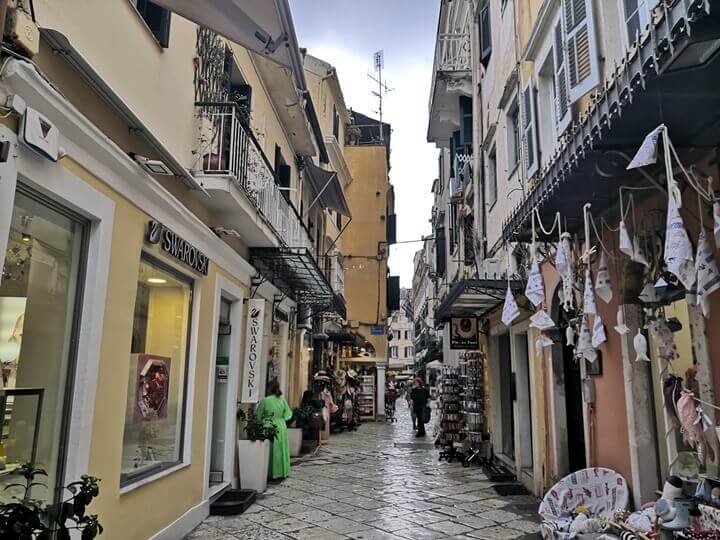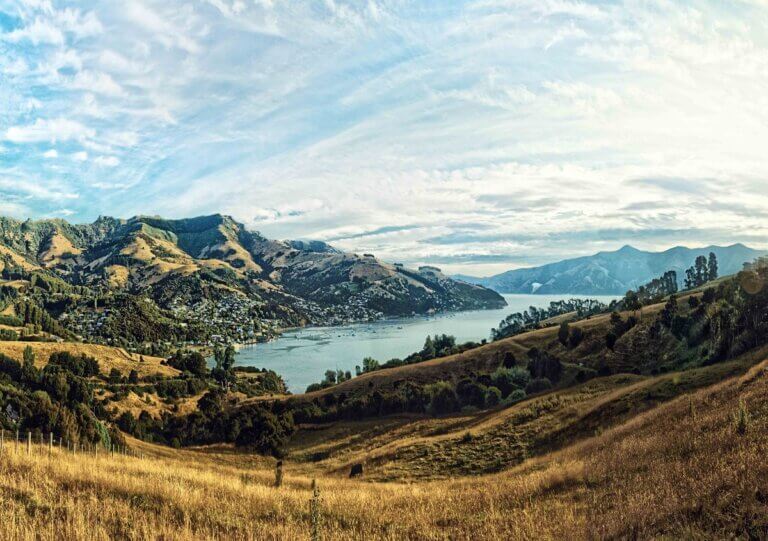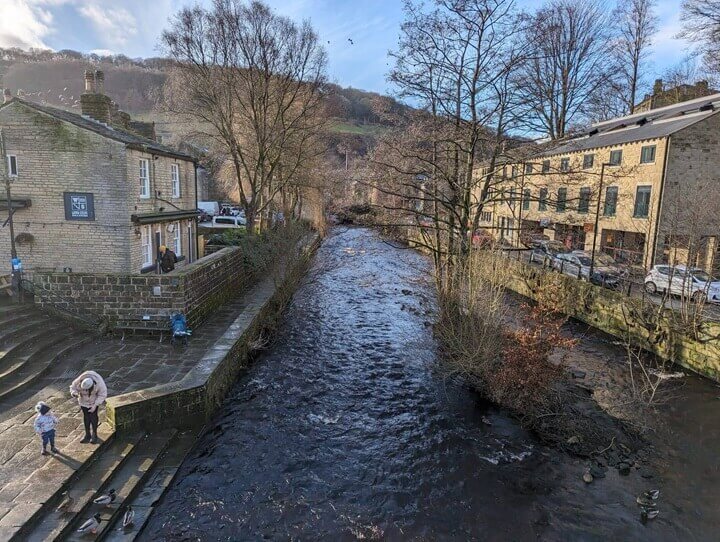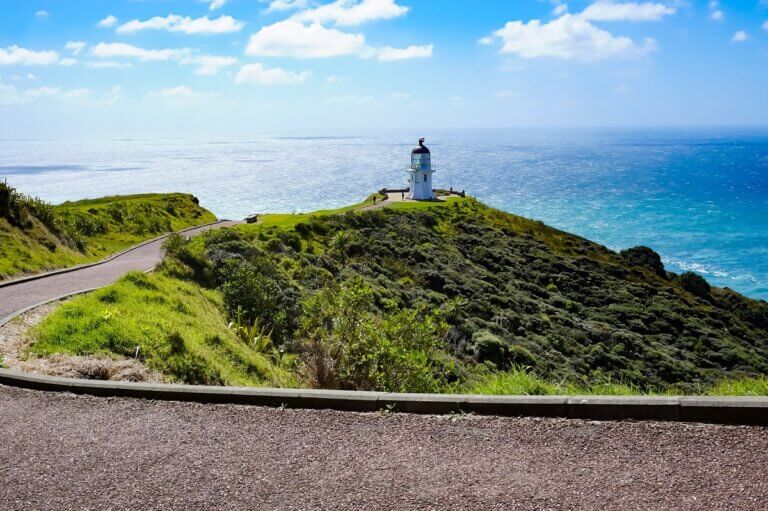Is Corfu Worth Visiting? 15 Great Reasons to Visit in 2024
Are you planning a Greek getaway and wondering if Corfu is worth visiting? Discover the many reasons why this island is a great travel destination in this guide.
Corfu boasts a fascinating history thanks to its strategic position at the entrance to the Adriatic Sea. The Greeks, Byzantines, Venetians, French and British have all left their mark on the island over the centuries. Numerous historic sites across the island remind of their presence.
Today, Corfu is a popular beach holiday destination attracting both package tourists and independent visitors. However, if you manage to stir yourself away from the sun lounger, you will discover that the island boasts a unique culture and a wealth of natural beauty spots waiting to be explored.
My husband and I spent two weeks exploring Corfu. We loved its relaxed atmosphere and enjoyed the many activities that the island offers. This is definitely the place we would like to come back to one day.
Stunning beaches, breath-taking landscapes and incredible historic sites are just some of the reasons why Corfu is worth visiting. Read on to find out more about why this island should be on your travel bucket li
Disclosure: Some of the links below are affiliate links, which means that at no additional cost to you, I may earn a small commission if you click through and make a purchase. Please note, I only recommend products and services that I know and love. Read full Privacy Policy here.
Is Corfu Worth Visiting?
The short answer? Yes, Corfu is absolutely worth visiting. The island boasts a unique personality, rich history, and lush, mountainous landscapes that set it apart from other Greek islands.
While Corfu has garnered a somewhat negative reputation for its abundance of resorts catering to package tourists, not every part of the island is completely dominated by tourism. It is true that certain coastal resort towns are completely tourist-centric and have experienced overdevelopment.
However, you can easily avoid this by heading to the less popular beach areas. Corfu also has many remote villages within the island’s interior that haven’t really been touched by tourist-driven developments.
If you are willing to give Corfu a chance, you will discover numerous historic places to visit, a wealth of hiking trails, a dramatic coastline waiting to be explored, and a raft of other fun experiences that are sure to keep you busy throughout the trip.
15 Great Reasons to Visit Corfu
Historic Old Town of Corfu
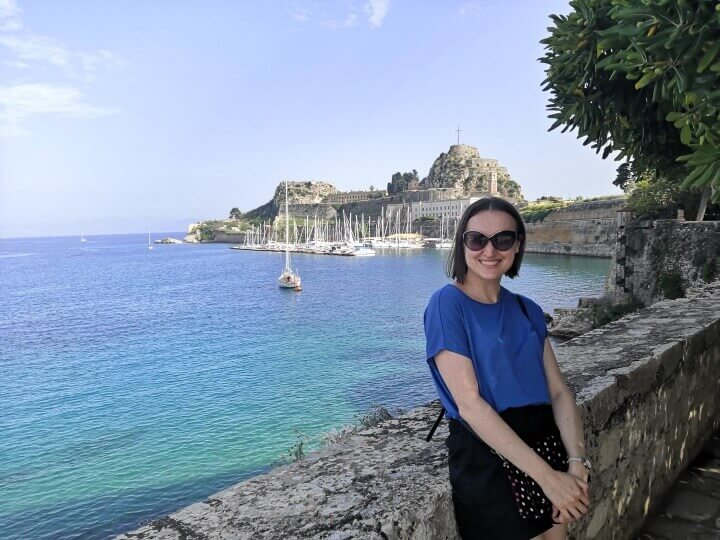
Designated a UNESCO World Heritage Site, the historic heart of Corfu Town—also known as Kerkyra—is a haven for history and architecture lovers. Despite its popularity among tourists, Corfu is worth visiting for this city alone.
The Old Town is a maze of cobbled streets lined with pastel-coloured neoclassical buildings. Some of these were built during the Venetians’ 400-year rule over the island, while others date back to the 19th century.
Two formidable fortresses, the Old and New, stand guard over the city from their elevated vantage points. Beyond their historical significance, they offer visitors sweeping vistas of the city and its surrounding landscapes.
The Old Town of Corfu also boasts a range of excellent museums, providing a cool refuge from the afternoon sun. These include the highly-regarded Museum of Asian Art—the only one of its kind in Greece—and Casa Parlante, which offers a glimpse into 19th-century Corfu life.
My personal favourite is the Archaeological Museum of Corfu. Although small, it is a great place to learn about Corfu’s ancient history. Many artefacts on display were discovered right on the island. Entry to the museum is 6€ (US $6.40). Please note that the museum is closed on Tuesday.
Corfu Town is also the gastronomic capital of the island. You may need to venture away from the main tourist streets to discover the best artisan delis, bakeries, cafes and bars. However, you will be rewarded with high quality food and unforgettable flavours.
I recommend a café and wine bar called Locale, just a moment away from one of the main tourist promenades. This charming spot serves up delicious Greek breakfast, cheese platters and fine wines, including a selection of local varieties. The lovely owner would also be more than happy to put a tasty lunch together based on your preferences and the seasonal produce currently available.
If you are planning on doing a day trip to the city during your trip, check out this one-day itinerary in Corfu Town to maximise your time there.
Stunning Landscapes
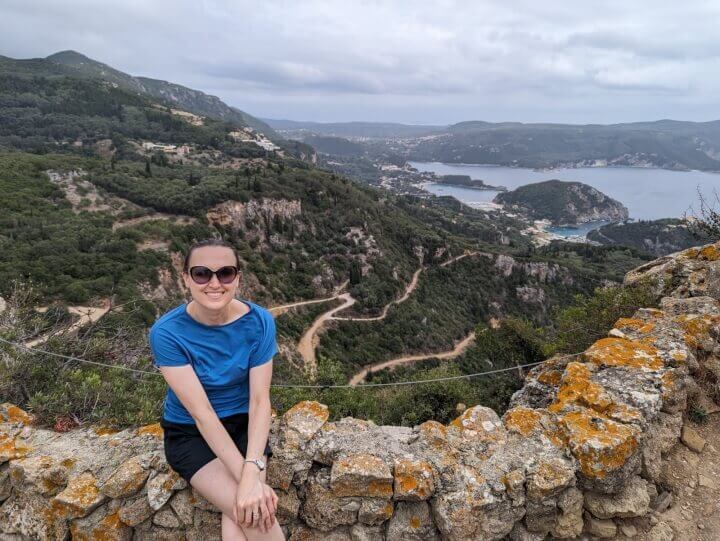
Corfu is famous for being the greenest Greek island and is home to a wealth of stunning natural attractions. It is sometimes referred to as the Garden Isle thanks to its fertile soils and an abundance of olive groves, citrus trees and Mediterranean pines.
Corfu’s north has a mountainous landscape where you will find some of the most dramatic natural attractions of the island. The area is dominated by the impressive Mount Pantokrator. Rising to 906 meters, it’s the island’s tallest peak. This region also features a rugged coastline marked by majestic cliffs and secluded caves and coves.
The landscapes change as you travel south. Although much flatter than the north, there are plenty of scenic spots to discover in South Corfu, including long sandy beaches, wetlands and sand dunes. If you are into birdwatching, head to Lake Korrission, a protected reserve often frequented by flamingos.
Abundance of Beautiful Beaches
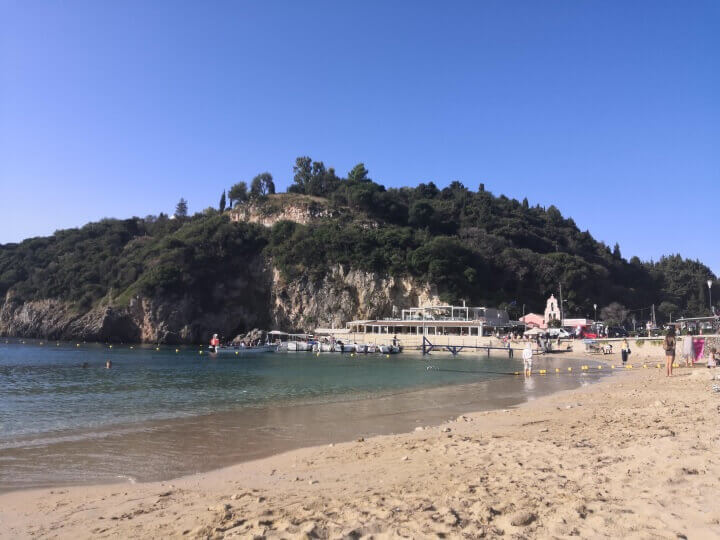
Corfu’s beaches deserve special mention. After all, they are the primary reason many people believe Corfu is worth visiting. There are dozens upon dozens of beaches to explore, encompassing both pebble and sand varieties.
One of the main draws of the beaches in Corfu is their crystal clear, blue waters. They never become green or murky. The sea around the island is typically calm, providing excellent swimming opportunities even for those who might not be confident swimmers.
The best beaches in Corfu include the picturesque Agios Spiridon in Paleokastritsa, the long and sandy Agios Georgios in the northwest of the island, and the double beach of Porto Timoni. However, there are many others worth visiting.
You can simply bring a beach towel, but many beach clubs also offer sun lounger rentals. The price for these varies between 7€ (US $7.40) and 20€ (US $21.00) per sun lounger, depending on location and proximity to the water. Some places charge extra for spots closer to the water.
It is Well-Connected
One of the reasons why Corfu is such a popular destination is because it is easy to reach. It is home to an international airport that connects the island with many European cities.
Many budget airlines serve the Corfu route, so getting there doesn’t need to break the bank. However, if you are travelling from further afield, you may need to make a stopover at a hub like London or Paris.
You can also get to Corfu by ferry from Igoumenitsa, a city on mainland Greece, and Albania. In the summer months, there are also ferry services that connect the island with the cities of Bari and Ancona in Italy.
Most visitors arrive in Corfu by air as it’s the fastest way to get there. However, if you have time and are planning an extended Mediterranean adventure, the ferry option might come in handy.
Delicious Food

Greek food is known for being both healthy and delicious, and in Corfu, you’ll have the chance to taste its most famous dishes. Staples like gyros, souvlaki, tzatziki, and the Greek salad are available nearly everywhere on the island.
Next time you’re in Corfu, be sure to try Sofrito, the island’s signature dish. It consists of slices of veal cooked in a white wine and garlic sauce, usually served with fries or mashed potatoes.
Another classic dish to add to your list is Pastitsada. This casserole dish features veal, beef, or rooster cooked in a rich tomato sauce with an abundance of spices and onions. It’s typically served over pasta, making it a hearty meal.
I personally love Bourdeto, a traditional spicy fish dish that consists of seabed fish, such as scorpion fish, cooked in a sauce of red peppers, onions, and chillies. It can be served with or without potatoes.
Another Corfu specialty is the kumquat, a small citrus fruit originally imported from the Far East. The island’s climate proved ideal for its cultivation, and locals, enamoured by its taste, continue to cultivate it actively today.
You can find kumquat products in almost every souvenir store. It’s used in liqueurs, salads, ice creams, marmalades, and sweets. Ensure you try it at least once before leaving the island.
It is an Affordable Greek Island
Although Corfu may not be as affordable as destinations in Southeast Asia, such as Thailand, it won’t stretch your budget as much as other Greek islands. While the island offers luxury hotels, indulgent spas, and fine dining restaurants, there’s also a plethora of options for those on a budget.
The minimum budget for Corfu starts at about €80 – €100 (US $87 – $108) per day for two people. This would cover accommodation in affordable guest houses, some meals out, public transport, and inexpensive activities, such as museum visits.
Budget accommodation starts at around €40 (US $43) per night, while traditional Greek dishes like gyros cost about €6 (US $6.50). A visit to a historic site or museum will cost between €3 and €6 (US $3.25 and $6.50). Enjoying Corfu’s beautiful beaches and hiking trails is free of charge.
Compared to other popular Greek islands such as Mykonos and Santorini, Corfu offers better value for money. Even at the peak of the tourist season, hotel prices in Corfu can be 40 – 50% lower than those in these more glamorous destinations.
Incredible Historic Sites
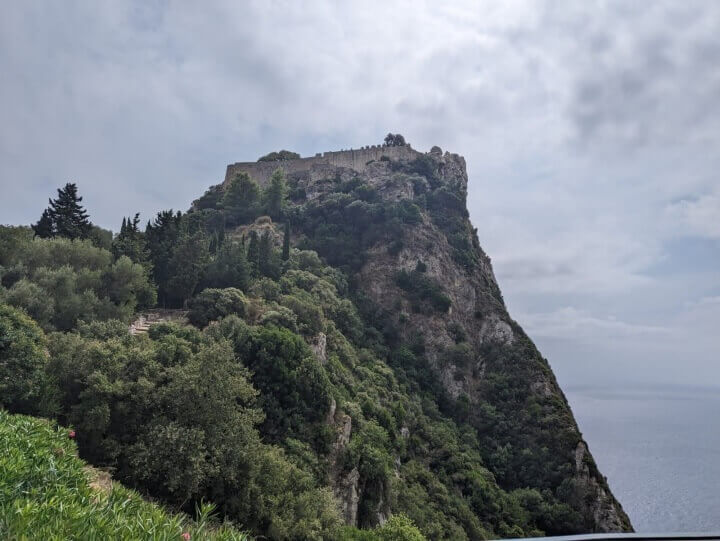
I’ve already mentioned that Corfu Town, with its ancient fortresses, stately homes, and old churches, is an ideal destination for history buffs. However, there are many other fascinating ancient sites throughout the island, including castles, monasteries, and even an abandoned village.
One of the most renowned historic sites in Corfu is Angelokastro, the ruins of a once-mighty Byzantine fortress. Perched atop a steep cliff on the northwestern coast near Paleokastritsa, visitors can explore the remnants of the castle and enjoy panoramic views of the coast.
Other notable sites to add to your itinerary include the Monastery of Paleokastritsa, Holy Monastery of Myrtidiotissa, and Pantokrator Monastery. Even if you’re not particularly interested in religious themes, these sites boast long and fascinating histories. Plus, they all offer breathtaking views of the surrounding areas.
As for the abandoned village, be sure to visit Old Perithia. Located on the slopes of Mount Pantokrator in the northeast of the island, it stands as the oldest village in Corfu. Constructed in the 14th century, it was abandoned in the 1960s. Today, you can stroll through its semi-ruined streets and feel as if you’ve travelled back in time.
Fantastic Hiking Opportunities
Given Corfu’s wealth of natural beauty, Corfu is worth visiting for those who love hiking. From gentle short walks along picturesque beaches and lagoons to demanding mountain trails and everything in between, Corfu offers something for everyone.
The ultimate hike on the island is the 220-kilometre-long Corfu Trail. This long-distance route follows the length of the island to give hikers an opportunity to enjoy some of Corfu’s most beautiful landscapes. It also showcases parts of the island that remain untouched by mass tourism.
The journey starts in the south of the island and culminates at Agios Spiridonas in the north, threading through Corfu’s bucolic countryside. The Corfu Trail usually takes 10 days to complete and requires a good level of fitness.
If you are not up for a multi-day hike, don’t worry. The trail has 10 distinct sections that you can tackle separately. There are also many other alternative day walks in pretty much every part of the island.
My personal favourite is the walk from Paleokastritsa to Angelokastro, passing through the picturesque mountain village of Lakones. Though the initial ascent up a donkey path can be a bit demanding, the awe-inspiring views at the pinnacle more than compensate.
The Lakones to Angelokastro section is much easier though, so you’ll be able to take your time and enjoy the views over one of Corfu’s most scenic areas.
Easy Boat Adventures
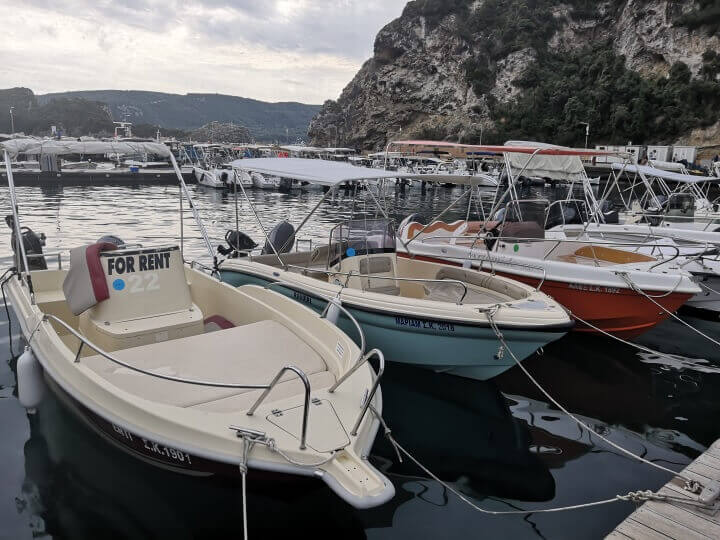
Corfu boasts a stunning coastline characterised by towering cliffs, ancient caves, and hidden beaches, best explored by boat. Travelers can choose from numerous boat tours and water taxi services available across the island.
For those seeking more independence, it’s possible to rent a boat without a license. However, this option is limited to speed boats with up to 30hp. Any boat more powerful than that requires a license.
If you’re unfamiliar with operating a boat, don’t worry. You’ll receive a brief training session before departure. Once you’ve got the hang of it, you’re free to explore the surrounding coast at your own pace.
Boat rentals are available in most coastal resort towns, so you can easily arrange one at your destination. Prices fluctuate based on the season, but you can expect to pay between 90€ (US $95) and 100€ (US $105) for half a day, and between 170€ (US $180) and 200€ (US $210) for a full day.
Excellent Day Trips
If you’d like to venture beyond the island, Corfu is an excellent base for several enjoyable and easy day trips. You can undertake these independently or join a guided tour.
One of the most popular day trip destinations from Corfu is the nearby islands of Paxos and Antipaxos. Located just south of Corfu, these islands boast beautiful beaches, natural beauty spots, and an even more relaxed pace of life.
Corfu Town has a regular ferry service to Antipaxos. The journey typically takes between 60 and 90 minutes and costs around 20€ (US $21) per person. Alternatively, you can explore these islands on this day cruise, which includes swimming stops and free time in Gaios village on Paxos.
You can also complement your time in Corfu with a visit to nearby Albania. Sarandë, an Albanian resort town, is easily accessible by ferry from Corfu Town.
The faster speed boat option completes the journey in 30 minutes, while the slower ferry takes about an hour. Tickets range between 18€ (US $19) and 40€ (US $42) per person. There is also a guided tour that includes visits to Sarandë and the UNESCO World Heritage Site of Butrint.
If you’re up for a longer day out, you can even visit the ancient Meteora site in mainland Greece on this guided day trip to Corfu. It might be on the pricier side, but if you believe you won’t have another opportunity to visit Meteora, it could be well worth the adventure.
Quaint Traditional Villages

Although nowadays the island is mainly seen as a beach destination, Corfu is worth visiting for its more traditional side that you can witness in its charming old villages. These are predominantly located in the island’s interior. Many of these villages remain largely untouched by mass tourism, offering a glimpse into the traditional Corfiot way of life.
In the northwest of the island, I recommend a visit to the village of Lakones. Situated on the slope of a steep hill above Paleokastritsa, Lakones offers breathtaking views of the island and the Ionian Sea. It’s also an ideal spot to enjoy a drink or meal at a quaint café and browse some traditional shops.
Another delightful traditional village worth visiting is Sokraki, just a 40-minute drive from Corfu Town. Nestled 480 meters above sea level, this village provides panoramic views across the island. Moreover, it boasts a captivating village square, heritage-rich houses, and classic cafes.
Fun Road Trips
This article highlights Corfu’s natural beauty spots, ancient sites, and charming traditional villages. The most effective way to access these locations and see as many as possible during your visit is by exploring the island by car.
With so much to discover, renting a car offers the freedom to access places that public transport might not cover. You can easily arrange your car rental online before you arrive in Corfu or in virtually any resort town once you get there. Just ensure you have a valid driving license and appropriate insurance.
While the island is not huge, you still need to allow for a few days to give it justice. You might opt to focus specifically on the dramatic northwestern coast and explore the likes of Paleokastritsa and Agios Georgious. You can also head to the northeastern coast to explore the charming villages of Kalami and Kassiopi.
Venturing south introduces you to Lake Korission and the scenic town of Lefkimmi. Along your travels, don’t miss out on a visit to the Governor Olive Oil mill. There, you can sample their award-winning olive oils and gain insight into the production process.
Along the way, don’t forget to explore some of the island’s interior with its traditional villages and endless olive groves. And given Corfu’s abundance of natural beauty, expect to make frequent stops to take in the picturesque landscapes. Corfu is absolutely spoilt with them.
Vibrant Nightlife
Travellers who enjoy a fun night out will find some great options in Corfu as well. While many resort towns quieten down after sunset, a select few remain bustling around the clock.
For instance, historic Corfu Town really comes to its own at night, teeming with restaurants, ice cream parlours, and bars that stay open until the wee hours. While I’m not one for wild parties, I thoroughly enjoyed strolling around the city centre. Many bars play live music in the evenings, which helps create a beautiful, relaxed atmosphere.
However, the undisputed epicentre of Corfu’s nightlife is the village of Kavos. Situated at the island’s southernmost tip, Kavos boasts a lively strip populated with numerous bars and clubs. Its dynamic nightlife and relatively affordable prices predominantly attract a younger crowd.
If the idea of endless partying fuelled by cheap alcohol doesn’t resonate with you, it might be best to avoid Kavos. Fortunately, Corfu offers a wealth of alternative destinations with a different feel.
Snorkelling and Diving
With its crystal-clear blue waters, it’s no surprise that Corfu is worth visiting for its great snorkelling and diving experiences. The island’s calm waters, teeming with marine life, have established it as a hub for underwater adventures.
Corfu is an ideal location for first-time divers, and several diving schools are available to guide you on this journey. One such school is the Achilleon Diving Centre located in Paleokastritsa, a hot spot for diving and snorkelling. They offer beginner lessons at Agia Triada Beach, an excellent location for newcomers to build their confidence.
Achilleon also offers daily diving trips for experienced divers near the coastlines of Paleokastritsa and Othonoi Island. Divers can explore a multitude of captivating sites, including shipwrecks, reefs, and caverns, teeming with various marine species.
Snorkelling in Corfu is even more accessible. Simply grab your gear and head to the beach. While organised tours and lessons are available for those who wish to snorkel in a group, I’ve found that at beaches like Agios Spiridon and Porto Timoni, all you need to do is go underwater to witness lively underwater scenes.
Sunset Views at Monastre
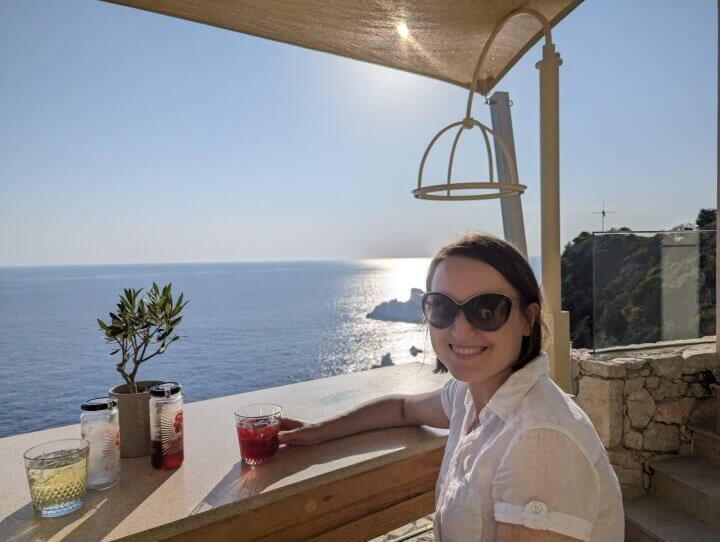
Corfu boasts breathtaking sunsets, and you can witness these spectacular views at many locations across the island. However, if you wish to watch the sunset while sipping a craft cocktail at a chic bar, I highly recommend Monastre.
Situated on the same headland as the Paleokastritsa Monastery, Monastre is both a bar and a restaurant. It offers sweeping sea views complemented by a menu of exquisite food and drinks. Their dishes, which incorporate high-quality local produce, bring together flavours from across the Mediterranean.
While indulging in a full meal might be on the pricier side, the drinks and snacks remain reasonably accessible. The bar’s seating, facing the sea, provides an optimal sunset-watching experience.
Unsurprisingly, Monastre can get quite busy in the evenings. We were able to get both bar seats and a table for dinner without a reservation. However, if you would like to enjoy a meal there and want to ensure you get a table with the best views, I highly recommend booking your spot on the restaurant’s website.
Tours and Activities in Corfu
Visitors to Corfu enjoy a great selection of activities, from walking tours of Corfu Town and day cruises to food tours and olive oil tastings.
When is the Best Time to Visit Corfu
The tourist season in Corfu starts in early May when many hotels and restaurants open after winter hibernation. It runs until the end of October as the temperatures become cooler and rainfall increases.
The hottest months with minimal rainfall are July and August, with daily highs of 33°C (91° F). Although in theory this is ideal for those looking for a classic beach holiday experience, this period also marks the year’s busiest time for visitors. Unfortunately, many popular beaches can get extremely crowded then.
If the school holiday calendar doesn’t bind you, I’d suggest considering a trip to Corfu in early June or September instead. These months still offer great weather but with fewer crowds. Moreover, accommodation and activity costs are generally lower during this time.
Also, if you are planning on hiking while in Corfu, July and August might be too hot. Late September and early June will offer a lot more breeze and comfortable temperatures for active pursuits.
One thing to note is that Corfu receives more rainfall than other Greek islands, mostly in winter. The upside is that the island is covered with lush greenery. The downside? If you are visiting in September, you may experience a couple of cloudy and rainy days.
The winter months are the low season. Some people choose this time to tackle some of the island’s biggest hiking tracks such as the Corfu Trail. However, please note that hotels and restaurants in many parts of the island are closed then, so plan your accommodation in advance to avoid disappointment.
How to Get to Corfu
The Ioannis Kapodistrias International Airport is Corfu’s primary airport. Most visitors to the island will likely start and conclude their journeys there.
The airport predominantly serves flights from other European destinations. If you’re traveling from more distant locations, you might need to have a layover at a major hub, such as Heathrow in London.
From the airport, you can take public bus no. 15 to Corfu Town or arrange for a taxi or private transfer to your final destination on the island.
If you’re already in Greece, you can catch a ferry to Corfu from Igoumenitsa in northwestern Greece, which is just a three-hour drive from Thessaloniki. The ferry journey takes just over an hour and costs 5.60€ (US $5.91) per person. These ferries operate throughout the year.
How to Get Around Corfu
Hiring a car offers the most freedom and flexibility while exploring Corfu. You can arrange your car hire online before your trip.
Alternatively, there are car hire offices in pretty much every tourist town, so it’s easy enough to sort something out once you’re already in Corfu. Expect to pay from 60€ (US $63) per day for a car.
However, a car is not essential to explore Corfu. The most affordable way to get around Corfu is by public bus. There is a network of buses that connects various parts of Corfu Town. There is also an intercity network, called the Green Buses, that connects Corfu Town to other parts of the island.
Please note, while all bus routes lead to Corfu Town, smaller destinations are often not inter-connected by public transport. So, if you want to travel from Paleokastritsa to Sidari, for example, you will need to do change buses in Corfu Town, which isn’t convenient.
If you would like to see different parts of the island, but hiring a car is not an option, you might be better off staying in Corfu Town and taking day trips by bus.
Taxis, Uber and private transfers are an option as well, and you can easily arrange these at your base. However, the costs can add up quickly.
Where to Stay in Corfu
Corfu has many options when it comes to great areas to stay. The final choice ultimately depends on what type of holiday you’re after and how much time you have on the island.
From busy resort towns promising a slice of escapism to mountain villages where time seemingly stands still, there is something for everyone in Corfu. That said, I do have a couple of favourite spots I’d love to recommend.
Corfu Town
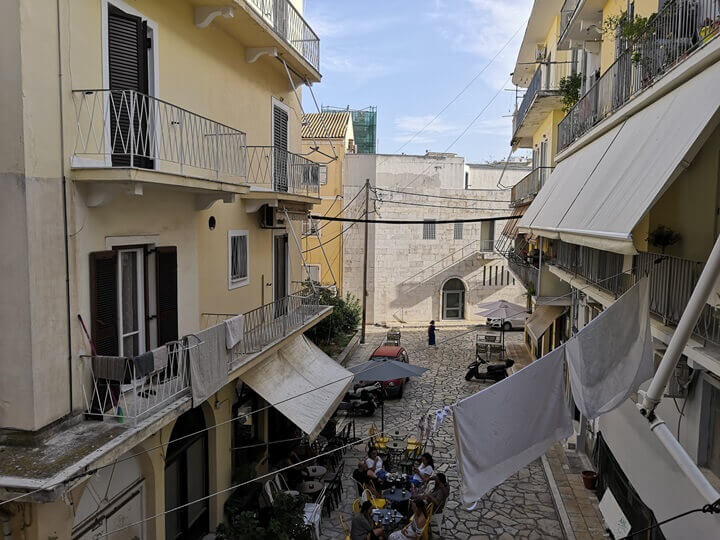
If you love history and beautiful architecture, I highly recommend spending a few days in Corfu Town. Walk its winding cobbled streets, visit its many museums and enjoy delicious Greek food at the city’s many independent cafes and restaurants.
There is a wealth of self-catering apartments that the locals rent out, so you can get a feel for what’s it like to live in this historic city. I highly recommend the Filarmonia Suite Annunziata Corfu apartment.
It is a well-equipped two-bedroom place right in the heart of it all. However, it is located on a quiet street, so you don’t need to worry about loud nightlife. We stayed there for three nights and could have happily spend even more time there.
Paleokastritsa
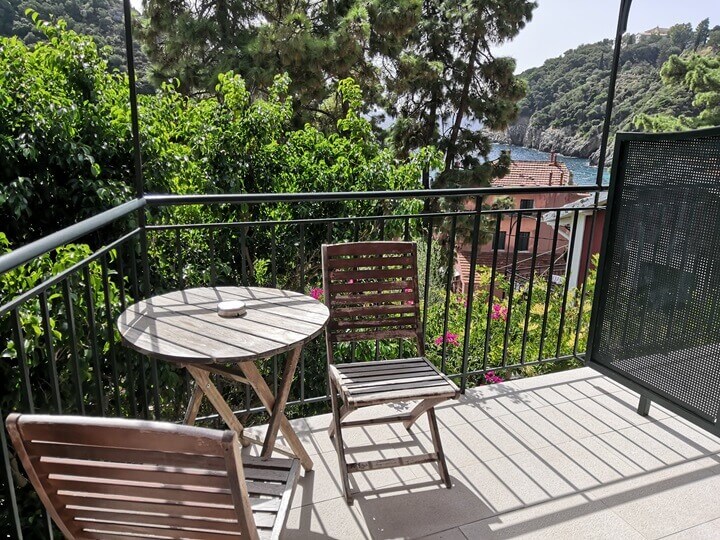
Another Corfu spot that we loved is Paleokastritsa. Although it’s very much on the tourist trail, this resort village boasts a stunning natural setting, a raft of fun things to do and a great choice of restaurants serving delicious Greek food. It is a great option for those who would like to combine a beach holiday with hiking, water sports and visits to nearby historic sites and heritage villages.
For your stay in Paleokastritsa, I can recommend Zefiros Traditional Hotel. Located right next to the main beach, Agios Spiridon, it is a reasonably priced, family-run hotel with great service and delicious breakfast. While the rooms are relatively basic, they have everything you need, and all offer picturesque sea views.
If your ideal trip include a luxurious villa stay, check out this guide to the best villas in Corfu with private pools.
Final Thoughts
So now you know that the beautiful island of Corfu is worth visiting. Whether you’re into hiking and cultural experiences or are simply looking to unwind by a beautiful beach, the island offers something for everyone.
If you are ready to plan your trip, I highly recommend adding a visit to the picturesque village of Paleokastritsa to your itinerary. Located in the northwest of the island, it is easily one of the most scenic resort destinations in Corfu.
Paleokastritsa offers a wealth of things to see and do, from enjoying local beaches and exploring its coastline by boat to hiking adventures and ancient historic sites.
It’s also a great place to gorge on delicious Greek food. This guide to the best restaurants in Paleokastritsa is a great starting point for planning your culinary adventures in the area.
It is quite easy to get from Corfu Town to Paleokastritsa, making it a great destination for a day trip. Chances are, you will want to stay there for longer though.
FAQs: Is Corfu Worth Visiting
Corfu has a reputation for being overly touristy due to it being a popular package holiday destination. There are busy resort areas such as Sidari and Kavos that have seen plenty of development. However, crowds can be avoided by heading to the quieter beach spots away from the tourist trail or the island’s interior. The latter is where you’ll find many villages haven’t really changed much in the last hundred years.
I recommend spending 4 to 5 days minimum in Corfu to see a few different things. If you would like to have a more comprehensive tour of the island and have some downtime at the beach, 10 days to two weeks would be more appropriate.
Yes, Corfu is safe. It has a low crime rate and is safe for tourists. However, as with anywhere else, the usual precautions apply. Don’t leave your belongings unattended and be aware of your surroundings. Avoid walking around on your own at night, especially in badly lit areas. Also, trust your gut. If someone or something feels dodgy, politely remove yourself from the situation.
Both Crete and Corfu are popular holiday destinations, and I don’t think one is better than the other. They both offer great beaches, beautiful scenery, delicious food, ancient sites and a great selection of accommodation. However, they have distinct personalities. Why not visit both and discover if you prefer one over another for yourself?
Enjoyed this article on whether Corfu is worth visiting? Bookmark or pin it for later.
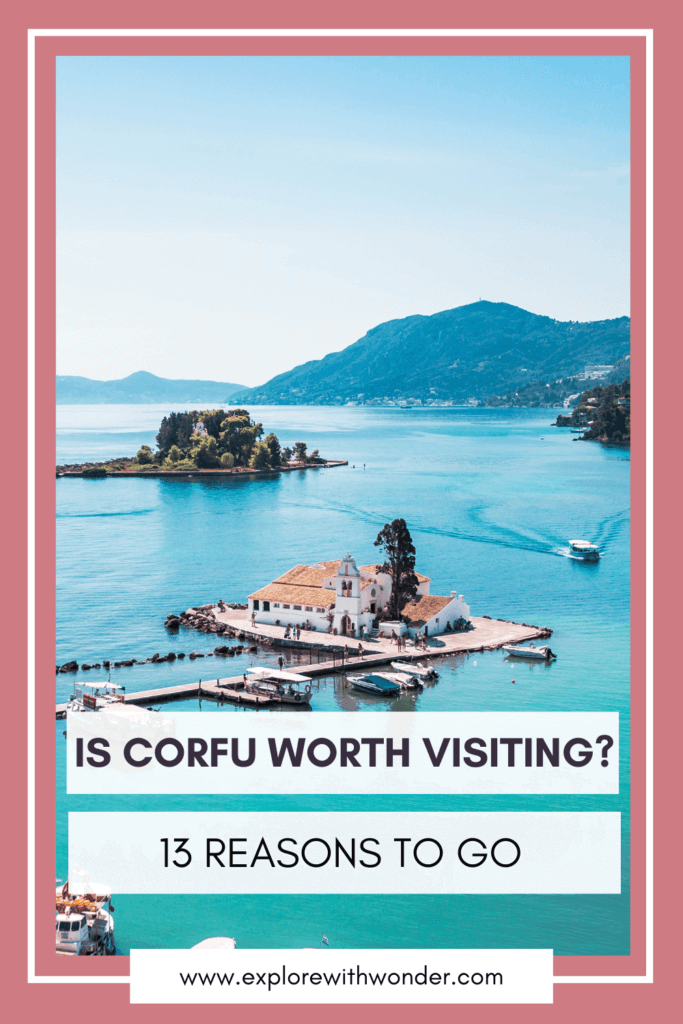
Related Reads: Corfu
- Is Corfu Expensive in 2024? The Ultimate Corfu Prices Guide
- Is Corfu Safe to Visit in 2024? The Ultimate Guide
- Corfu in September: Everything You Need to Know in 2024
- How Many Days in Corfu Do You Need for a Great Trip
- Corfu Without a Car: The Ultimate Guide 2024
- The 10 Best Corfu Day Trips in 2024
- The 15 Best Villas in Corfu with Private Pool in 2024
- One Day in Corfu Town: The Ultimate Itinerary
- The 14 Best Things to Do in Paleokastritsa, Corfu in 2024
- Angelokastro Corfu: Ultimate Visitor’s Guide in 2024
- Corfu Town to Paleokastritsa: Complete Guide 2024
- The 7 Best Restaurants in Paleokastritsa, Corfu in 2024
- Is There Uber in Corfu in 2024? Everything You Need to Know


